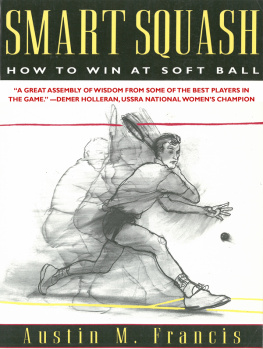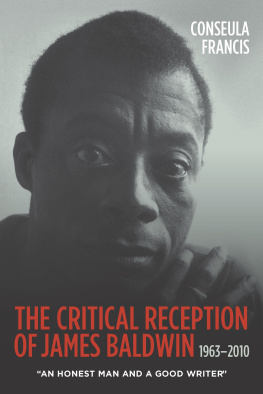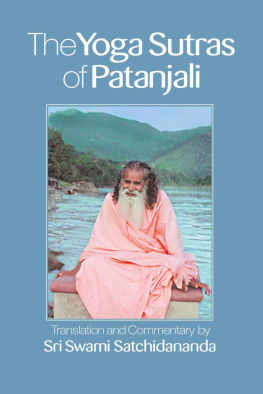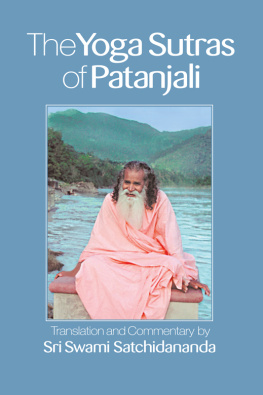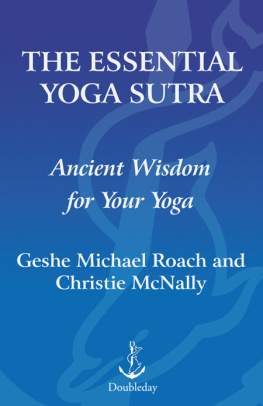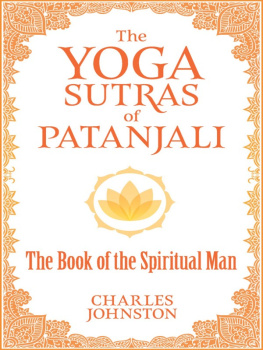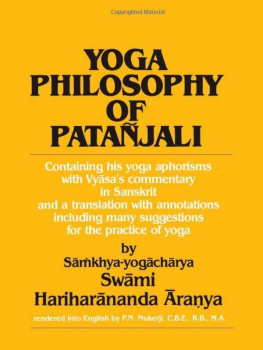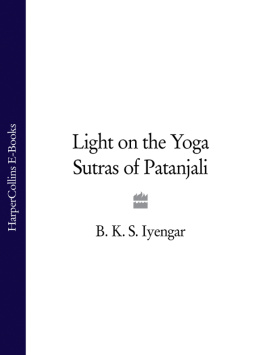Title Page
PATANJALI S HEALING
An Interpretation of
The Yoga Sutra Of Patanjali
by
Timothy C Francis
Publisher Information
First published in Great Britain, 2013 by
ARTHUR H. STOCKWELL LTD
Torrs Park, Ilfracombe, Devon, EX34 8BA
Established 1898
www. ahstockwell.co.uk
Digital edition converted and distributed in 2013 by
Andrews UK Limited
www.andrewsuk.com
Timothy C Francis, 2013
All rights reserved.
No part of this publication may be reproduced or transmitted in any form or by any means, electronic or mechanical, including photocopy, recording, or any information storage and retrieval system, without permission in writing from the copyright holder.
The quotations from Juan Mascars translation of The Bhagavad Gta (1962) and The Upanishads (1965) are reproduced by permission of Penguin Books Ltd. Copyright Juan Mascar.
A Note from the Author
This is my second attempt at interpreting the Yoga Sutra of Patanjali. At the time of my first - Patanjalis Steps of Yoga (1997) - I hadnt tasted the joys and sorrows of yoga soup quite deeply enough, although at that time I did not know it. The joys and sorrows come from within as light and darkness (day and night) play the tune. This work is an ode to that melody.
I am sixty-one years old and have the pleasure of being dyslexic, perhaps because I was deaf for the first five years of life. I had abscesses in both ears that were surgically removed (the abscesses that is!). Words that are sounds take a long time for me to digest as I tend to cling to an inner silence that is reassuring. Words have a history of confusion, my other senses perhaps being oversensitive. I took to yoga like a duck to water, and I have practised now for thirty-five years; I have been writing this final book for the past three (I seem to like being challenged). I feel this book to be a little miracle of self-searching and spiritual discovery from its beginning and - yes, I hope - up until its conclusion. Expecting me to think conventionally is like expecting a cat to bark or expecting smoking not to kill. I do tend to press the self-destruct button long before the self-preservation! But I do love life and value compassion above wisdom - whatever that is! I am at last developing increasing tolerance of my own perception of truth, thanks to the sutras teaching the middle path through dualism. Now I accept that I am a dyslexic agnostic with a not so unique perception of life, only the determination to express it through this work.
A wise man has said, I think, therefore I am. I say, I think, therefore I know nothing. What I know of the spirit comes from seekers of truth, Patanjali being just one. Philosophies are a product of mind, and mind change. What is known of the self comes from our reactions. Know thyself! I do hope my actions and words have not upset my friends, family and teachers so much that they cannot forgive me for my seeking within. It has all been part of following Patanjalis steps of yoga towards healing. I am acutely aware of suffering and my part in it; we all suffer before we are healed, or we would have nothing to do.
May this unique life be a happy one for all.
Blessings.
Tim, 2012.
Dedication
For the Yoga for Health and Education Trust and all those involved in yoga
In the beginning chaos, then the Word,
Then light, and life upon the planet stirred,
Now aeons after, chaos rules again.
The Word forgotten, only words remain.
Colin Hurry, in his Receding Galaxy
Foreword
The object of this work is to bring The Yoga Sutra of Patanjali alive - to make it accessible to everyone, not just the academic, guru or linguist - to take it out of the classroom into the living room, to give everyone the opportunity to appreciate Patanjalis blessings of spiritual healing through yoga. Having endeavoured to be faithful to the spirit, rather than the word, of the original, I have kept comment to a minimum to enable you to form your own impressions. Therefore this work is not a direct translation but an interpretation based on following the footsteps within a work of genius that beckons our investigation. I hope the truth of the sutras remains consistent; is it our understanding of language/words that changes with time?
I extend my gratitude towards Georg Feuerstein and B. K. S. Iyengar for their excellent works on the sutras, their translation and commentary being my main source of reference though I have combined many other influences during my journey into yoga. Having limited knowledge of Sanskrit myself, there seems little point in changing that which is already clear, so occasionally I have borrowed their words. Bearing this in mind, I trust this work to be sufficiently different in structure and form as not to cause offence to previous translators, especially the aforementioned. Having a simple mind that dislikes complication, cleverness is beyond me, hence this work of intuition and practice. If I challenge convention or even amuse Patanjali himself, I am sure I am not the first or the last to do so. Perhaps it is for us all to write our own sutras, using the little insight we have gained, being mindful that yoga is not a serious business; it is our efforts that make it appear so. My hope is that this work resembles the original as an expression of ideas without dogma, enabling the reader to accept or reject each sutra without hindrance to belief. Indeed, I hope each sutra becomes a confirmation of personal belief, bearing the stamp of Patanjalis incredible insight into personal development through yoga. Read each sutra as if for the first time, without forming any conclusion, remaining flexible regarding interpretation, and practice.
The word yoga has many definitions, all arguably plausible - for example, yoke (to harness or link), or union (the act of bringing together), or equipment (the yoke itself, a bar or frame by which two draught animals are joined for working together and associated paraphernalia, reins etc.), or conjunction (a coming-together), or path (as in raja yoga). King Bhoja, in his acclaimed commentary on the Yoga Sutra, Raja Martanda, felt justified in characterising yoga as viyoga (separation). This is logical if samadhi, the aim of yoga, is perfect forgetting, or dissolving into the spirit. Balance is another popular definition, probably because of its link with the asanas, or postures, and their mystical connotations. All seem to point towards a possible link between mankind and The Absolute, so yoga could also mean the technology of enlightenment.
This demonstrates that words can be wearisome within the limitations of language. As the listener listens the voice speaks. Sometimes we hear that which we want to hear or understand, rather than what is intended. When studying a yoga sutra it is necessary to comprehend the meaning of its words as a whole. This comes not through academic achievement or skilful discussion on its finer points alone, but through quiet reflection and practice. The sutras are not answers or questions in isolation; they are a continuous thread. This thread is a series of ideas that gradually develop awareness by encouraging one to observe their application in everyday life today, and only you can do it. Try not to analyse the sutras; let them analyse us now. I have attempted to retain their innate magical quality.
Perhaps the oldest language, Vedic, spoken in the Indus Valley region of North-Western India at least 9,000 years ago, had a word that expressed yoga. But Vedic was never a written language, so there is no dictionary and it has been a dead language for approximately 7,000 years. The demise of Vedic possibly occurred through the overwhelming influence of new settlers, or rebellion against the established order of that time. The language Sanskrit, still spoken, originated around 5,000 bc. From this period onward, Sanskrit developed into the idiom that recorded ancient lore and legend. The Vedas (the first scriptures of the Hindus) were thus passed on through the spoken word of ancient Sanskrit. The Vedic language, however, is the divine language of spirit, and Sanskrit is thus a degenerate form. The words of Vedic are the Vedas . A word is Veda, when if pronounced correctly it will immediately produce the right effect - or, put another way, if one speaks yoga correctly its meaning will become manifest as if Veda (with a bit of luck). Though altered since those earliest days, Sanskrit still retains this inherent power especially when a single syllable or group of syllables, known as a mantra, is voiced with faith. The Gayatr Mantra is probably the closest to its original form (see page 56) . Persian, Greek and Latin, the foundation for most languages of Europe, have all been influenced by Vedic, via Sanskrit, through the displacement of these peoples and their legends over many centuries. The process is still alive today through the widespread interest in yoga and its emissaries. Thus Sanskrit is a step towards Veda (history) those who knew the ancient rishis, who spoke Vedic.
Next page


